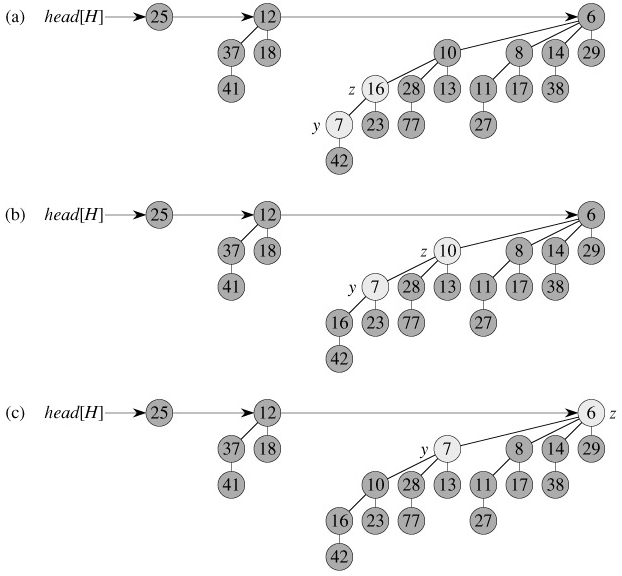Operations On Binomial Heaps

The BINOMIAL-HEAP-DECREASE-KEY procedure takes O(lg n) time. By property 2 of Lemma 19.1, the maximum depth of x is ⌊lg n⌋, so the while loop of lines 6-10 iterates at most ⌊lg n⌋ times.
Deleting a key
It is easy to delete a node x's key and satellite information from binomial heap H in O(lg n) time. The following implementation assumes that no node currently in the binomial heap has a key of -∞.
BINOMIAL-HEAP-DELETE(H, x)
1 BINOMIAL-HEAP-DECREASE-KEY(H, x, -∞)
2 BINOMIAL-HEAP-EXTRACT-MIN(H)
The BINOMIAL-HEAP-DELETE procedure makes node x have the unique minimum key in the entire binomial heap by giving it a key of -∞. It then bubbles this key and the associated satellite information up to a root by calling BINOMIAL-HEAP-DECREASE-KEY. This root is then removed from H by a call of BINOMIAL-HEAP-EXTRACT-MIN.
The BINOMIAL-HEAP-DELETE procedure takes O(lg n) time.